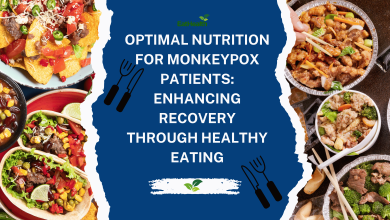Harmonious Meals: The Art of Conflict-Free Eating
Achieving Wellness Through Balanced Nutrition: A Guide to Conflict-Free Eating

Harmonious Meals: The Art of Conflict-Free Eating
In the fast-paced modern world, where dietary trends come and go and nutritional advice seems to change by the day, finding harmony in our meals can be a daunting task. With so much conflicting information about what constitutes a healthy diet, it’s easy to feel overwhelmed and unsure of the best approach to nourishing our bodies. However, by embracing the concept of conflict-free eating, we can navigate the complexities of food choices with confidence and create meals that promote both physical well-being and culinary enjoyment. In this comprehensive guide, we’ll explore the art of harmonious meals, from understanding the principles of conflict-free eating to practical tips for incorporating them into your daily life.
Understanding Conflict-Free Eating
At its core, conflict-free eating is about making food choices that align with our individual needs, values, and preferences without feeling restricted or overwhelmed by conflicting dietary advice. It’s about finding balance, both in terms of nutrition and enjoyment, and cultivating a positive relationship with food that promotes overall well-being. Conflict-free eating rejects the notion of “good” and “bad” foods and instead encourages a flexible and mindful approach to nourishment that honors our bodies and tastes. Just as we know Mindful Eating: The Psychology Behind Nutrition Choices
Principles of Conflict-Free Eating
- Intuitive Eating: Listen to your body’s hunger and fullness cues and honor its cravings without judgment. Eat when you’re hungry, stop when you’re full, and choose foods that satisfy both your physical and emotional hunger.
- Mindful Eating: Slow down and savor each bite, paying attention to the taste, texture, and aroma of your food. Avoid distractions like screens or multitasking, and focus on the present moment to fully experience the pleasure of eating.
- Diverse and Balanced Diet: Embrace variety in your diet by including a wide range of foods from all food groups. Aim for balance and moderation, incorporating plenty of fruits, vegetables, whole grains, lean proteins, and healthy fats into your meals.
- Flexibility and Adaptability: Be open to trying new foods and experimenting with different flavors and cuisines. Allow yourself the freedom to enjoy your favorite foods in moderation while also being willing to adjust your choices based on your changing needs and preferences.
- Respect for Food Sources: Consider the ethical and environmental implications of your food choices and strive to support sustainable and ethical food practices whenever possible. Choose organic, locally sourced, and humanely raised foods when available, and minimize food waste by using ingredients efficiently.
Practical Tips for Conflict-Free Eating
- Meal Planning: Plan your meals ahead of time to ensure a diverse and balanced diet that meets your nutritional needs. Incorporate a mix of protein, carbohydrates, and healthy fats into each meal, and include plenty of colorful fruits and vegetables for added nutrients.
- Cooking at Home: Take control of your food choices by preparing meals at home whenever possible. Cooking allows you to choose high-quality ingredients and customize your meals to suit your taste preferences and dietary requirements.
- Mindful Grocery Shopping: Make thoughtful choices at the grocery store by reading labels, comparing prices, and selecting products that align with your values and health goals. Choose whole, minimally processed foods over highly refined and packaged options whenever possible.
- Eating Out: When dining out, navigate restaurant menus mindfully and opt for dishes that feature fresh, whole ingredients and are prepared with minimal added fats, sugars, and salt. Don’t be afraid to ask questions or request modifications to suit your dietary needs.
- Enjoyment and Pleasure: Remember that food is not just fuel; it’s also a source of pleasure and enjoyment. Allow yourself to indulge in your favorite foods occasionally and savor the experience without guilt or shame.
Conclusion
In a world filled with conflicting dietary advice and fad diets, conflict-free eating offers a refreshing and sustainable approach to nourishing our bodies and minds. By embracing intuitive eating, practicing mindfulness, and making thoughtful food choices that align with our values and preferences, we can create harmonious meals that promote both physical health and culinary enjoyment. Whether you’re a seasoned foodie or just beginning your journey to a healthier lifestyle, incorporating the principles of conflict-free eating into your daily routine can help you find balance, satisfaction, and true nourishment with every bite.




